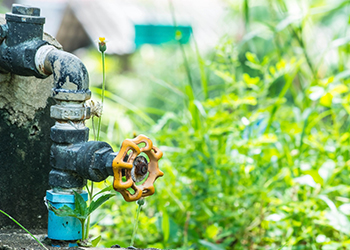 As winter fades and warmer temperatures arrive, it’s the perfect time to check your home’s plumbing system for any damage caused by cold weather. Spring maintenance can prevent costly repairs and ensure your plumbing runs efficiently throughout the year. Use this checklist to keep your home’s plumbing in top shape.
As winter fades and warmer temperatures arrive, it’s the perfect time to check your home’s plumbing system for any damage caused by cold weather. Spring maintenance can prevent costly repairs and ensure your plumbing runs efficiently throughout the year. Use this checklist to keep your home’s plumbing in top shape.
- Inspect Pipes for Leaks and Damage
Cold temperatures can cause pipes to expand and contract, leading to cracks or leaks. Check exposed pipes in basements, crawl spaces, and under sinks for signs of moisture or corrosion.
- Check Outdoor Faucets and Hose Bibs
Outdoor fixtures are susceptible to freezing damage. Turn on exterior faucets and hose bibs to ensure water flows freely. If the water pressure is low or non-existent, there may be a pipe issue that needs attention.
- Test Sump Pump Functionality
Spring often brings heavy rains, making it crucial to have a working sump pump. Pour a bucket of water into the sump pit to ensure the pump activates properly. If it doesn’t, clean the pump inlet or consider servicing it.
- Clean Gutters and Downspouts
Clogged gutters can lead to improper drainage, affecting your home’s foundation and plumbing. Remove leaves, debris, and dirt to allow proper water flow.
- Inspect Toilets for Leaks
To check for hidden leaks, add a few drops of food coloring to the toilet tank. If the color appears in the bowl without flushing, you may need to replace the flapper or other internal components.
- Flush Water Heater Sediment
Over time, sediment can build up in your water heater, reducing efficiency and lifespan. Drain a few gallons of water from the tank to remove debris and improve performance.
- Examine Washing Machine Hoses
Inspect hoses for cracks, bulges, or leaks. A damaged hose can lead to costly water damage if it bursts. Replace any worn-out hoses with stainless steel braided ones for durability.
- Test Water Pressure
Low water pressure could indicate a leak or clog in your plumbing system. Use a pressure gauge to check your home’s water pressure and ensure it is within the recommended range (40-60 psi).
- Clean Drains and Check for Slow Draining
Slow drains may indicate a clog forming in your pipes. Use a natural drain cleaner (such as baking soda and vinegar) or a drain snake to clear minor blockages before they become severe.
- Schedule a Professional Plumbing Inspection
If you discover issues beyond basic maintenance, consider scheduling a professional plumbing inspection. A licensed plumber can detect hidden leaks, check sewer lines, and ensure your plumbing system is in excellent condition.
Final Thoughts
Taking the time to inspect and maintain your plumbing system this spring can save you money and prevent major issues down the road. By following this checklist, you can ensure a smooth transition into the warmer months with a fully functional plumbing system. If you run into problems or need assistance, call MB HAYNES Plumbing 828-254-6141. Our expert team is ready to help with all your plumbing needs!
